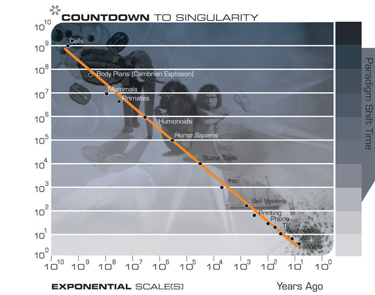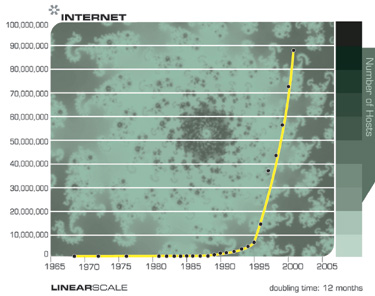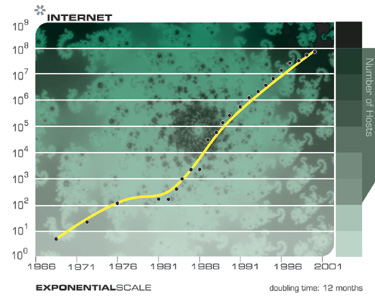 Social Lives of Places and Things
Social Lives of Places and Things Social Lives of Places and Things
Social Lives of Places and Things
30 January 2006
Anth 3520
|
|
The telephone, invented in the 1870s as a way of transmitting speech electrically. People have always had ways to communicate over long distances, but the phone made it faster. But what other effects has the telephone had? And what about the next generation of connectivity?
Announcement: Writing Centre Courses
Reading for Today was: Dant 130-200: Turn it on: objects that mediate; Who’s what? People as objects; Conclusion
Reading for Next Week: Rathje 3-78: Yes, Wonderful Things; Garbage and History; What We Say, What We Do
Quiz: 2%
Homework for next week: 2%. Write a 400 word reflection -- and come to class ready to discuss it, and hand it in. The task: Consider the Dant book and the first part of the Rathje book together. Discuss any aspect of this comparison. (e.g. their methods of studying objects/human behaviour, or the insights they produce)
Preliminary notes on major term assignment handed out. (Full details to follow) See here.
Lecture notes
Last week:
- the cases we discussed... underscore the difficulty of doing anthropology at home
This week:
- Objects in Time - Modernity and Biography
- Objects that Mediate
- People as Objects
.... taking Dant as a basis but expanding into details on change over time in the way that objects are made and used, and the social effects of those changes
Body Modifications
Stelarc: http://www.stelarc.va.com.au/
Orlan: http://www.orlan.net//, http://www.digibodies.org/online/orlan.htm
Now, what happens when we introduce exponential change?
Ray Kurzweil and exponential change

"The paradigm shift rate (i.e., the overall rate of technical progress) is currently doubling (approximately) every decade; that is, paradigm shift times are halving every decade (and the rate of acceleration is itself growing exponentially). So, the technological progress in the twenty-first century will be equivalent to what would require (in the linear view) on the order of 200 centuries. In contrast, the twentieth century saw only about 25 years of progress (again at today's rate of progress) since we have been speeding up to current rates. So the twenty-first century will see almost a thousand times greater technological change than its predecessor."
"The following two charts show the overall growth of the Internet based on the number of hosts. These two charts plot the same data, but one is on an exponential axis and the other is linear. As I pointed out earlier, whereas technology progresses in the exponential domain, we experience it in the linear domain. So from the perspective of most observers, nothing was happening until the mid 1990s when seemingly out of nowhere, the world wide web and email exploded into view. But the emergence of the Internet into a worldwide phenomenon was readily predictable much earlier by examining the exponential trend data.
Notice how the explosion of the Internet appears to be a surprise from the Linear Chart, but was perfectly predictable from the Exponential Chart"


Ray Kurzweil: the Law of Accelerating Returns (on exponential growth) http://www.kurzweilai.net/articles/art0134.html?printable=1
But what are the results of exponential change in, say, connectivity?
Thomas Friedman, The World is Flat, 2005.
p 10: "Remember, when Bill Clinton was elected president in 1992, virtually no one outside of government and the academy had email, and ... in 1998, the Internet and e-commerce were just taking off.
Well, they took off -- along with a lot of other things... And that is why I argue in this book that around the year 2000 we entered a whole new era: Globalization 3.0. Globalization 3.0 is shrinking the world from a size small to a size tiny and flattening the playing field at the same time. While the dynamic force in Globalization 1.0 [1500-1800 AD] was countries globalizing and the dynamic force in Globalization 2.0 [1800-2000 AD] was companies globalizing, the dynamic force in Globalization 3.0 -- the thing that gives it its unique character -- is the newfound power for individuals to collaborate and compete globally. And the lever that is enabling individuals and groups to go global easily and so seamlessly is not horsepower, and not hardware, but software -- all sorts of new applications -- in conjunction with the creation of a global fiber-optic network that has made us all next-door neighbours. Individuals must, and can, now ask, where do I fit into the global competition and opportunities of the day, and how can I, on my own, collaborate with others globally?"
What will be the results of exponential change in technology with respect to robotics, AI, cyborgs?
Bionic Man (fiction, 1970s): http://www.nostalgiacentral.com/tv/drama/sixmillion.htm
Neuro-controlled Bionic Arm (fact, 2005): http://www.popsci.com/popsci/bown2005/personalhealth/19e6ee82ea447010vgnvcm1000004eecbccdrcrd.html